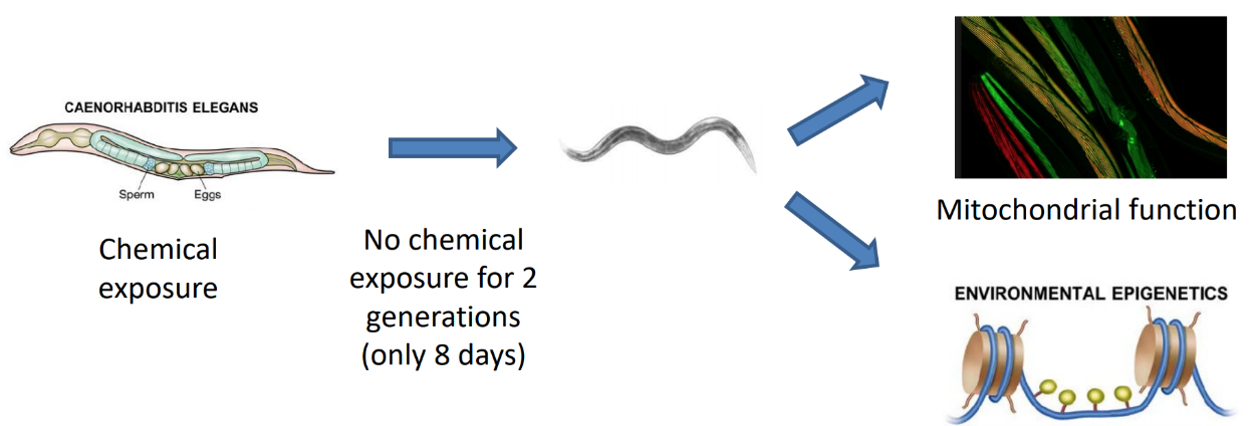Overview
Mitochondria are the energy production centers of the cell, contain mitochondrial DNA, and play a role in genetic diseases. Growing evidence suggests that the toxic effects to mitochondria from exposure to certain chemicals can be highly persistent, and that some people may be more sensitive due to genetic differences.
Project 3 researchers are working to understand how early-life exposures may impact epigenetics and the functioning of mitochondria in developing organisms. They hypothesize that exposure in early-life to mitochondrial toxicants, but not during adulthood, can lead to lifelong changes that may even be passed on to future generations.
To answer these questions, the researchers work mainly with Caenorhabditis elegans – a tiny worm that is widely used as an animal model in exposure research. C. elegans has a short life cycle and many offspring, so intergenerational exposure effects can be assessed more quickly. The worm also has a consistent pattern of development, which makes it easier to observe any changes. The mitochondrial biology of the worms is also similar to that of humans.
Objective
Expose C. elegans and neuron cells from mammals to the following chemicals and environmental mixtures:
- arsenic/arsenite – common food and water contaminant
- organophosphate flame retardants – found in indoor environments, household dust, and child products (see Project 2)
- pentachlorophenol – used as a pesticide and disinfectant
- Elizabeth River sediment extract (PAHs) – found at a Superfund site in Virginia (see Project 4)
- Remediation byproducts from PAH remediation (see Project 5)
Determine: 1) Whether exposure causes mitochondrial and epigenetic effects that are persistent throughout life and into subsequent generations, 2) If effects are greater in some genetic backgrounds, and 3) Whether persistent alterations are associated with epigenetic changes.

Importance
Many of the chemicals studied by the Duke Superfund Research Center are thought to be implicated in mitochondrial and genetic diseases, which affect about 1 in 4,000 children in the U.S. Project 3 research sheds light on which of these chemicals might impact mitochondrial function, and how that might alter development of those exposed, and future generations. Neurons are particularly sensitive to mitochondrial and epigenetic changes. Aim 2 research has implications for Parkinson’s disease (as of 2015 affected 6.2 million people globally) and common behavioral disorders such as ADHD.
Project 3 research has also looked at how environmental conditions might influence effects from mitochondrial toxicants. One study found that C. elegans that underwent more “exercise” and were occasionally not fed, were better protected against the mitochondrial toxicity of some pollutants. This and similar research show that physical activity and diet might influence the impacts of mitochondrial toxicity.
Trainee Highlights
Project Aims
- Evaluate long-term mitochondrial effects of a series of Superfund chemicals and mixtures on C. elegans
- Test whether pre-differentiated mammalian cells exposed to same chemicals from Aim 1 will impact michondrial function after cell differentiation
- Assess whether chemicals that cause long-term mitochondrial toxicity also alter epigenetic programming and gene expression
Want to learn more?
- Check out our recent publications
- Read progress reports for project 3


